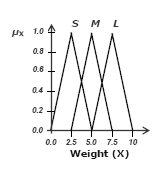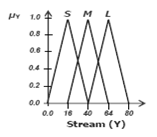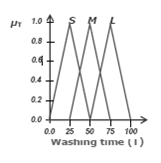Fuzzy Associative Memory
Introduction:-A fuzzy logic system contains the sets used to categorize input data (i.e., fuzzification), the decision rules that are applied to each set, and then a way of generating an output from the rule results (i.e., defuzzification). In the fuzzification stage, a data point is assigned a degree of membership (DOM) determined by a membership function. The membership function is often a triangular function centered at a given point.
The Defuzzification is the name for a procedure to produce a real (non-fuzzy) output .
Associative Memory is a type of memory with a generalized addressing method. The address is not the same as the data location, as in traditional memory. An associative memory system stores mappings of specific input representations to specific output representations.
Associative memory allows a fuzzy rule base to be stored. The inputs are the degrees of membership, and the outputs are the fuzzy system’s output. Fuzzy Associative Memory (FAM) consists of a single-layer feed-forward fuzzy neural network that stores fuzzy rules "If x is Xk then y is Yk" by means of a fuzzy associative matrix.
FAM has many applications; one such application is modeling the operations of washing machine.
Example: Washing Machine (FAM Model) For a washing machine, the input/output variables are: Output variable: washing time (T) , depends upon two input variables. Input variables are: weight of clothes (X) and stream of water (Y). These variables have three different degree of variations as: small (S), medium (M), and large (L). These three variables X, Y, and T, are defined below showing their membership functions μX , μY and μT .

■Clothes weight is X,
− Range is from 0 to 10 and
− The unit is kilogram (k.g).

■Stream of water is Y
− Range is from 0 to 80 and
− The unit is liter per minute (liters/min)

■washing time is T
− Range is from 0 to 100 and
− The unit is minutes (min.)